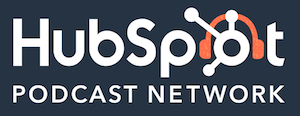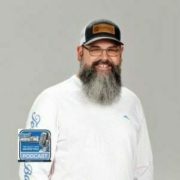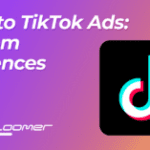The Secret Sauce For Smarter Marketing Execution
The Secret Sauce For Smarter Marketing Execution written by John Jantsch read more at Duct Tape Marketing
Marketing Podcast with Clare Price
 In this episode of the Duct Tape Marketing Podcast, I interview Clare Price. Clare is the President and CEO of Octain Growth Systems, the systems, process, and tools company that helps you take control of your marketing through smart execution. She’s also the author of a book — Smart Marketing Execution: How To Accelerate Profitability, Performance, And Productivity
In this episode of the Duct Tape Marketing Podcast, I interview Clare Price. Clare is the President and CEO of Octain Growth Systems, the systems, process, and tools company that helps you take control of your marketing through smart execution. She’s also the author of a book — Smart Marketing Execution: How To Accelerate Profitability, Performance, And Productivity
Key Takeaway:
![]()
![]()
Questions I ask Clare Price:
- [1:26] What is your backstory and entrepreneurial journey?
- [3:43] How do you differentiate between a tactic and what you’re calling strategy?
- [4:41] What have you found are some of the biggest growth killers, particularly for small businesses?
- [7:15] How do you manage the fact that somebody is hiring you to do marketing, but you can’t really do marketing if you don’t get into every aspect of their business?
- [10:20] How do you differentiate between execution and planning?
- [12:00] How do you help somebody prioritize what’s on the roadmap?
- [12:52] How do you help somebody understand the importance of brand development?
- [15:17] How do you help folks not just clarify a message, but clarify a message that matters and that differentiates them?
- [17:40] Let’s talk about expansion – how do you help people hone in on smart ways to grow?
- [20:30] Where can people connect with you, find out more about your work and get a copy of your book?
More About Clare Price:
- Download a free chapter of her new book
- Get a copy of the book on Amazon — Smart Marketing Execution: How To Accelerate Profitability, Performance, And Productivity
Take The Marketing Assessment:
Like this show? Click on over and give us a review on iTunes, please!
John Jantsch (00:00): This episode of the Duct Tape Marketing Podcast is brought to you by Marketing Against the Grain, hosted by Kip Bodner and Keion Flanigan is brought to you by the HubSpot Podcast Network, the audio destination for business professionals. Look, if you wanna know what’s happening now in marketing, what’s ahead and how you can stay ahead of the game, this is the podcast for you, host and HubSpot’s, CMO and SVP of Marketing. Kip and Keion share their marketing expertise unfiltered in the details, the truth, and nobody tells it. In fact, a recent episode, they titled Half Baked Marketing Ideas They Got Down In the Weeds, talked about some outside of the box campaigns with real businesses. Listen to marketing, its grain, wherever you get your podcast.
(00:54): Hello and welcome to another episode of the Duct Tape Marketing Podcast. This is John Jantsch, my guest Clare Price. She’s the president and CEO of Octane Growth Systems, the systems, process and tools company that helps you take control of your marketing through smart execution. And she’s also the author of a book we’re gonna talk about today, Smart Marketing Execution, How to Accelerate Profitability, Performance, and Productivity. So Clare, welcome to the show.
Clare Price (01:23): Thank you John. Very nice to be here.
John Jantsch (01:26): So gimme a little bit about your, I gave kind of the bios scripted bio, but gimme a little bit of your backstory, your entrepreneurial journey. How’d we get to here?
Clare Price (01:36): Well, I started developing the system about 10 years ago. I released a series of what I would call playbooks about for small business marketing because you see, well first of all, I wanna say something why I’m so honored to be here with you
John Jantsch (03:16): Obviously you’re preaching to the choir here. I mean, I’ve said strategy before tactics probably 6 billion times in the last 30 years. But one of the challenges, and I’m curious how you’ve encountered this. One of the challenges I find is that you can say the word strategy to people until you’re blue in the face and they don’t really know what it means. And in fact, the part of the challenge is that if you Google the term marketing strategy, you will find a list of blog posts that basically 15 tactics will be listed. So how do you get somebody, do you differentiate between a tactic and what you’re calling strategy?
Clare Price (03:49): Well, the way that we do it is we’ve developed six canvases that focus on six core areas of business growth. And that’s brand development, brand power, customer acquisition, message clarity, market expansion, sales enablement, so marketing and sales working together and product marketing or product innovation. And the way that we develop strategy, I think is very unique for small businesses is we ask a series of discovery questions. And the way that we get to the answers of those questions is by having our clients work through a series of worksheets, assessments and tools. What that does, John, is that actually has them developing strategy while they’re thinking everything through. And at the end they do have a strategic blueprint for those specific areas.
John Jantsch (04:40): Right. So what have you found, and you have a section on this, so I’m gonna go there and let you kind of talk about it, but what have you found are some of the biggest growth killers, particularly for small businesses?
Clare Price (04:52): I think the biggest growth killer is the trial and error marketing churn and burn marketing going out. And imagine, I know you’ve had this experience, I bet everyone in your audience has had this experience where you, you gotta do goals. Okay, we’re recording this at the end of October, so everybody’s thinking 2023 planning. So people get into the room, it’s an offsite, maybe there’s great food, there’s pastries, and everybody settles into their chair in front of a huge whiteboard and there’s a facilitator, sometimes not, and they scribble furiously for two or four hours and the whiteboard is completely filled and everybody’s got their goals and their desired approach or the direction circled. And at the end of that exercise, the CEO or the CMO marketing director stands up and says, Okay everybody, let’s get it done. What happens then is everybody jumps outta their chair and goes and does what they know how to do, what is missing.
(05:49): And what we really focus on in smart marketing execution is looking at the alternatives. Not just jumping into the tried and true, let’s go do social media, let’s go do Facebook ads, let’s go do you know, video advertising or whatever. But let’s look at the alternatives for the goal that you wanna set or that you have set. And then we benchmark those alternatives using a set of data. And that data includes looking at team capabilities, looking at resources, looking at timeline, looking at budget. In fact, in my book in chapter nine, smart execution chapter, there’s actually a formula where you can benchmark the projected revenue minus the cost, divide that by the timeframe and come up with a growth score. And when you do that, you can actually literally using data show what is likely to have a better return on investment than something else. So that’s the approach we take.
John Jantsch (06:54): So one of the things that I certainly found early on working with small business owners is that I had my toolbox of traditional marketing things. But when you work with a small business, and you’ve alluded to some of these, I mean, you get into operations, what is traditionally seen as operations, maybe you get into what is traditionally seen as finance. I mean, how do you manage the fact that somebody is hiring you to do marketing, but you can’t really do marketing if you don’t get into every aspect of their business?
Clare Price (07:24): And that’s why one of the things that I’m doing with is developing what I call a ecosystem of right partners. And so if somebody does, I do see a finance problem, I do an operations problem, I have perhaps a fractional CFO that I can refer them to or a fractional business coach that can address that problem. And the key part of having the ecosystem is we work together. We don’t just hand off a referral and say, Okay, you go do your thing and then when you’re done, we’ll come start, we start marketing. We’ve worked really out the team and I’m really looking for preferred partners that, and some are already listed on my website that can be part of this ecosystem.
John Jantsch (08:09): And I actually think that’s a practice that more marketing consultants, more consultants in general ought to do. You know, think about all the various areas that every client you work with, whether they probably have an accountant already and they maybe have a coach, an executive coach. And I mean, I think all of these professionals that serve a client, wouldn’t the client be served better if we all work together
Clare Price (08:27):
John Jantsch (08:31): And it’s odd because they’re rarely done and sometimes what you might propose gets pushback from another professional. And I always pick on accountants cuz it’s so easy to do that where if they truly understood what you’re proposing, they might be behind it. And so I think it really, instead of being counter, it’s like you’re all working for the mutual good.
Clare Price (08:54): Exactly. And one of the things that we say that Octane is really a marketing operating system because we are not looking at it from a standpoint of just being, let’s find a program, let’s find a campaign and try it and see if it works. It’s a combination of strategy, execution, and in our case automation. So we will also look at the automated systems that are in place when you can explain to a financial professional or a business professional the idea of marketing from an operation sense, which is very common at the large corporate level, not so common that the mid-market level, I think they have a better understanding and I think they’re more willing to get into that partnership.
John Jantsch (09:41): Well, and I think that your growth score, for example, that you just mentioned, you know, take an account in the growth score and basically say, we’re talking about this investment because it will return x. I think that’s as opposed to, oh marketers just wanna spend money on ads. I mean, you’re now basically showing here’s what this investment is going to return. And that’s obviously, that’s an argument that’s gonna go a lot farther with a financially business owner, but certainly with an accounting professional, isn’t it?
Clare Price (10:11): Absolutely.
John Jantsch (10:13): So I meant to actually ask this a little earlier. You know, specifically have the word execution in the title of the book. How do you differentiate between execution and say planning?
Clare Price (10:24): The way that we differentiate it is that we call the planning of the blueprint, our strategic blueprints. And the execution is the roadmap. So the blueprint is how are we gonna build this? And the roadmap is once we know what we wanna build, how are we actually gonna get from where we are today to the destination? And the key part of smart Execution is actually building that roadmap out so that people are, again, not just doing what they know how to do or what they’ve scrolled on a napkin or a whiteboard, but we’ve actually, we do roadmaps for clients that are similar to customer journey, similar to a product development roadmap so that they actually can see month by month what their goal, goal is, where they’re going.
Jay Baer (11:11): This is Jay Baer marketing and customer experience, author, advisor, and expert. And I’m not just an occasional guest on the Duct Tape Marketing podcast, I’m also a listener. Why? Because in my estimation, the Duct Tape Marketing podcast is one of the finest business resources available in any medium. The guests are tremendous. John knows just about everything about marketing and business. And if you can’t improve your business after listening to this show for a while, I don’t know what can.
John Jantsch (11:43): So we do similar, have done similar kind of approach for years. And one of the things that often happens is there’s huge gaps, there’s huge things they’re missing, they wanna do it all. How do you help a business owner prioritize? Again, if they throw enough money at something, obviously everything could be a priority, but in real life, help somebody prioritize what’s on the roadmap.
Clare Price (12:06): And that comes into, comes, the gross score comes into that. And it also just in general, what the likelihood of success is, also what the urgency is. Those are some of the ways that we help them priorit. Yeah,
John Jantsch (12:20): You mentioned the accelerators and really there’s a good half of the book is really built on unpacking those. And by the way, great tools, worksheets in the book. I’m sure that we’ll at the end all invite you to tell people where they can find those in real life as well as in the book. But let’s talk about a couple of the growth accelerators. A lot of small business owners, when they hear brand development, all the brand kind of words, they either feel like it’s a bunch of fluff or it’s not for them, or they minimalize it. Say, Oh yeah, I’ve got a logo, that’s my brand. How do you help somebody understand the importance of brand development?
Clare Price (12:58): We have a tool as part of the Octa Grow system, as part of the brand accelerator called the value grid. That is my core tool that every client has to go through. And what it does is, again, it replaces the traditional, I will call it agency approach. Cause if you think about the traditional agency approach, what happens when you’re gonna do brand values, right? Again, everybody’s in that room, they throw a bunch of words up on the whiteboard, they circle the words, everybody agrees on the top three, five or seven, and they leave the room and the agency puts a sentence against them. That’s what I’ve experienced in my career. Yes. What we do is we have our value grid starts with those values. So same start, but we also define the value based on a dictionary definition. So everybody has the same definition of the value and they’re not self self-defining the value.
(13:49): Sure. That’s number one. Number two, we ask them why that brand is important to the company and we ask them to really give us a reason behind the value. How does that change the company culture? How does that change the customer experience? How does that really relate to the day to day employee experience? And then the fourth step is we asked them to give us the what, the why and the what. So how are you living that value every day in your business? And that’s actually put in a grid style with a lot of detailed information. And the values do come out of that. And then they’re tied to the company culture, they’re tied to the employee experience and they’re tied to the customer experience.
John Jantsch (14:39): I think people really underestimate, a lot of times when they think of brand, it’s like, what’s the public face? I think they really underestimate the internal culture of the employee experience because that’s really when it really, really comes down to it. That’s in, especially in small businesses, that’s how your brand is experienced is through your people. Absolutely. Probably less from your television ads. So really an important part that I think is missed often chapter five talks about, and it’s one of the accelerators, you talk about a message clarity. I find for a lot of small businesses, we have to actually start with message period. Because a lot of times it’s just like, here’s what we do. And it’s like a race to be the same. How do you help folks not just clarify a message, but clarify a message that matters that differentiates them?
Clare Price (15:24): So again, we use the message canvas, which is in the book, which has the six areas that we look at. So we look at, well, first of all, what’s the big idea? What do you really want to communicate? And the other thing I think that’s important, John, and I think this is the core big mistake that business owners make when they’re looking at their message, it’s a translation error. They know what they do, they know how they speak it, they know how they live it, but the customer doesn’t necessarily live and speak the same way the business owner does. For example, I had one client who sells software to 12 schools, and they had a real problem with their messaging because they’re an engineering company. They were selling to superintendents of schools, public information off, and a whole different culture of people with a whole different set of ways of looking at the world.
(16:19): And so they would come in with speeds and the school people were like, Well, we don’t understand this. What is this? So we ended up doing a lot of work on the messaging there to translate the true benefit, the benefit to the customer, the benefits that the customer was living day to day. And I think that’s the other mistake that a lot of happens with messaging is people go with a very surface message like, Okay, what’s our benefit? Okay, well our benefit is faster, cheaper, better, but what’s the actual lived experience, that person, that customer’s having? What’s gonna change the way that they do their business, live their life or live relationships? And then once you find that you find that real deep desire, motivation, then you can really provide the right message.
John Jantsch (17:14): After doing thousands and thousands of interviews with customers of our customers, one of the things that’s become very clear to me is most businesses don’t understand the real problem they’re solving for their customers. And that’s kinda what you’re getting at. Or at least have no ability to put it in the words or the voice of the customer. And when you can do that, it really sends sort of a magical message to the person you get me. Exactly. I think that’s why it’s such a great starting point. Let’s talk about expansion, which is again, another one of the accelerators. A lot of people just traditionally, it’s like, Hey, we’ve gotten to a certain point. Do we go after a new market? Do we just make more products? Do we go into a different geography? How do you help people hone in on smart ways to grow, I guess?
Clare Price (18:01): Well, I look at market expansion and I’ll use an overused term and hopefully you’ll forgive me. The land and expand approach to expansion, which is finding your core niche, finding that core area where you’re the strongest, and then moving out from there. I tell my clients it’s a pie, not a circle, because what I typically find is that people wanna get customers everywhere, especially when they’re startups. And so they’re sort of creating dots in a circle that never ever get connected. But if you look at it as a pie where there’s a starting point and from the starting point you sort of expand out from there, you look for related niches. And I do have a chart in my book that talks about when my first consulting after leaving the corporate world was in real estate marketing and branding. And it was great until 2009 came along
(18:57): And then, oh, I will never forget, I was driving to one of my clients, Ke Williams in living in Sacramento at the time, and I’m driving up to the office and look across the parking lot and financial title company, which was one of the largest title companies in the Sacramento region. Their doors were bolted, were literally chain locked, and all of their file boxes were outside the door permanently closed. The real estate marketing and branding that I was doing disappeared very quickly, as you can well imagine. Yeah, I had to find a new niche. So what I did was I looked at what are the characteristics of what a real estate person is dealing with in terms of branding and then what are similar, what would be similar professions? So for example, real estate they’re all selling the same product, so they have to brand on their person, their own character, their own style of working. So who else has to do that? Well, insurance representatives for example, and financial representatives. So looking for related segments that have the same characteristics that you’re already serving. So the product is likely to be a good fit or a good fit with small modifications, I think is a really good way to go. And it’s particularly valuable for those companies that don’t have a huge marketing budget who need to take it slow so they can take advantage of the next door neighbor, if you will, in terms of the customer segment.
John Jantsch (20:29): Awesome. Well, Claire, we’re, we have run out of time, but I’d sure love it if you’d invite people to where they could find the book, where they can find out more about your work.
Clare Price (20:39): Okay, well I wanna let your audience know, John, that I do have a special offer for them. If they go to octane growth.com/my offer and click the link, they’ll be given free download of the first chapter of the book and they’ll also be able to set up a 30 minute discussion consulting call with me if they wanna purchase the book. The book is available on Amazon, Barnes and Noble and all of your regular channels. There’s also links to those on my website and I just wanna, again, thank you very much for the opportunity to speak with you and with your audience.
John Jantsch (21:14): Well, thanks so much for stopping by and taking time to stop by the Duct Tape Marketing Podcast and hopefully we’ll run into you one of these days out there on the road.
Clare Price (21:22): I hope so.
John Jantsch (21:22): Hey, and one final thing before you go. You know how I talk about marketing strategy, strategy before tactics? Well, sometimes it can be hard to understand where you stand in that, what needs to be done with regard to creating a marketing strategy. So we created a free tool for you. It’s called the Marketing Strategy Assessment. You can find it @ marketingassessment.co. Check out our free marketing assessment and learn where you are with your strategy today. That’s just marketingassessment.co. I’d love to chat with you about the results that you get.
Sign up to receive email updates
Enter your name and email address below and I’ll send you periodic updates about the podcast.
This episode of the Duct Tape Marketing Podcast is brought to you by the HubSpot Podcast Network.

HubSpot Podcast Network is the audio destination for business professionals who seek the best education and inspiration on how to grow a business.
Did you miss our previous article…
https://www.sydneysocialmediaservices.com/?p=3462






